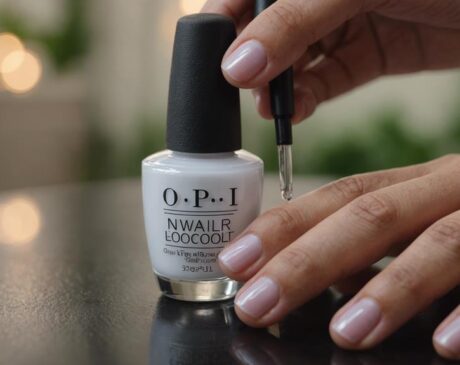Are Nail Drills Damaging?
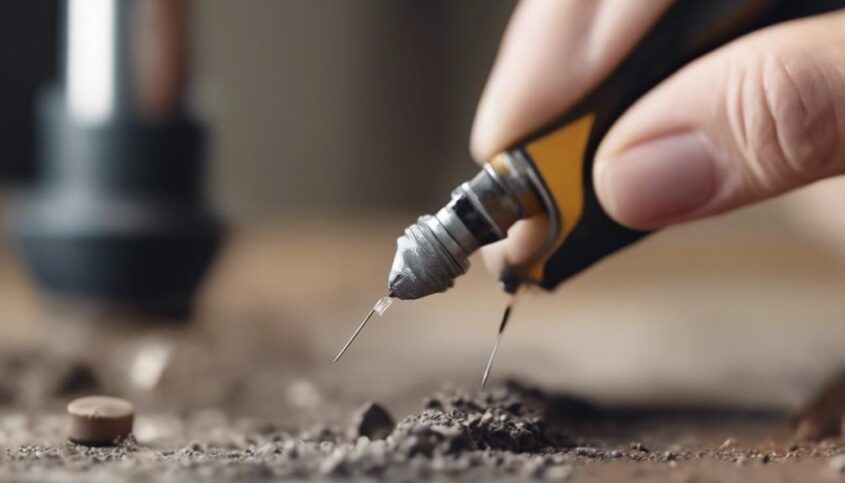
Using nail drills without proper care can indeed be damaging to your nails, potentially causing issues like nail thinning, plate separation, and infections. Ensuring you choose the right drill bits, techniques, and speeds is crucial. Remember to prioritize safety and hygiene by cleaning and sanitizing your nail drill regularly. Signs of damage include brittle, rough-textured nails or redness around the nails. Expert recommendations emphasize investing in quality drills and practicing proper techniques. Understanding these aspects will help you maintain healthy nails while enjoying the benefits of nail drills.
Key Takeaways
- Improper use of nail drills can cause nail thinning and plate separation.
- Aggressive drilling increases infection risks; proper technique is crucial.
- Damage may occur if skin around nails is compromised during drilling.
- Selecting correct drill bits and techniques is essential to prevent damage.
- Regular maintenance and hygiene practices can minimize risks of nail damage.
Potential Risks of Nail Drills
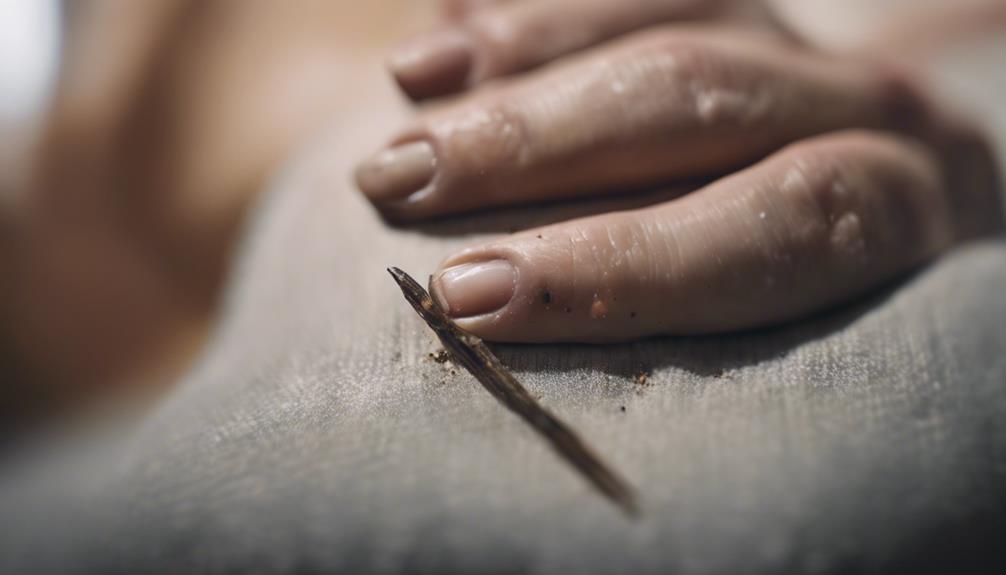
Using a nail drill incorrectly can lead to various potential risks for your nails and surrounding skin. When not handled properly, nail drills can cause damage such as nail thinning, nail plate separation, and even infections. To prevent these issues, it is crucial to use the right drill bits and techniques.
One risk of improper nail drill usage is nail thinning, where the nail becomes weak and prone to breakage. This can result from excessive drilling or using too much pressure on the nail surface. Additionally, if the drill bit is too abrasive or left in one spot for too long, it can lead to nail plate separation.
Moreover, using a nail drill incorrectly can also increase the risk of infections. When the skin around the nails is compromised due to aggressive drilling, bacteria and fungi can enter, causing painful and unsightly infections. To avoid these risks, always ensure you are using the nail drill gently and with caution to protect the health and appearance of your nails.
Benefits of Using Nail Drills
If you're considering using a nail drill, you'll be glad to know that they can help you achieve a more polished and professional look in less time. Nail drills offer both safety features and increased efficiency, making your nail care routine quicker and easier. By utilizing a nail drill correctly, you can enjoy smoother, more precise results without spending hours on intricate nail work.
Nail Drill Safety
When operating a nail drill, it is essential to prioritize safety to maximize the benefits of this tool. Here are four key safety tips to consider:
- Use the right drill bits: Choose the appropriate bit for the task at hand to ensure precision and prevent damage.
- Control the speed: Adjust the speed settings to match the nail service you are providing for smoother and more controlled results.
- Keep it cool: Avoid overheating by taking breaks to prevent discomfort or damage to the nail bed.
- Proper maintenance: Regularly clean and sanitize your nail drill to prolong its lifespan and ensure hygienic practices.
Nail Drill Efficiency
Maximize your nail salon's efficiency by incorporating nail drills for precise and quick manicures and pedicures. Nail drills offer numerous benefits that can revolutionize your nail care routine. These tools provide unparalleled speed in shaping nails, removing calluses, and smoothing rough edges. By using nail drills, you can significantly reduce the time spent on each client while maintaining high-quality results. The versatility of nail drills allows for intricate nail art designs, cuticle care, and gel polish removal with ease. Say goodbye to tedious manual filing and hello to a more streamlined process that elevates your services. Embrace the efficiency and precision that nail drills bring to your salon, impressing clients with faster and flawless nail treatments.
Proper Technique for Nail Drills
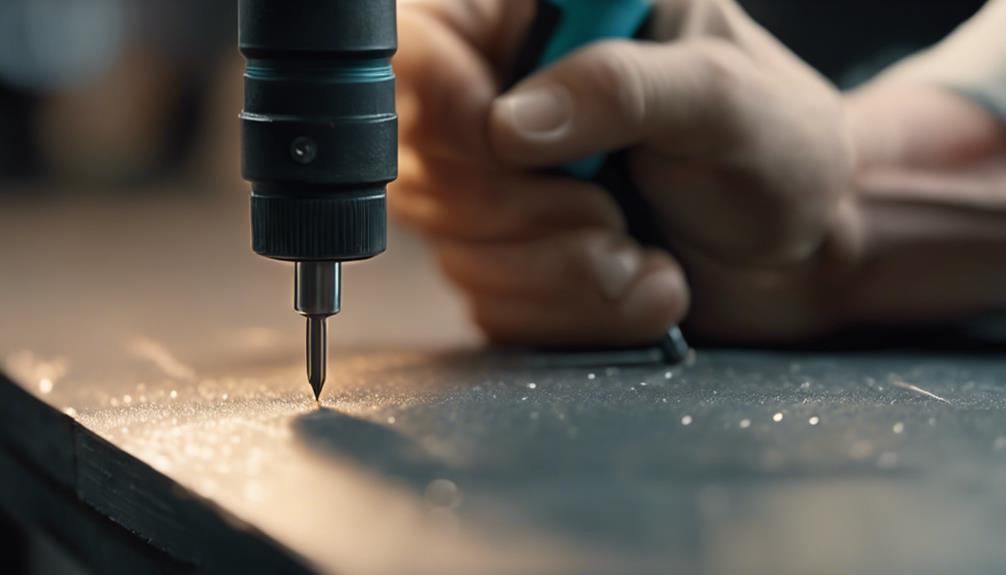
When using nail drills, remember the importance of controlling the speed to avoid damaging your nails. Additionally, selecting the right bit for the task at hand is crucial for a safe and effective manicure or pedicure. Proper maintenance and regular cleaning of your nail drill will help ensure its longevity and performance.
Drill Speed Control
To ensure optimal results and prevent damage, mastering the control of drill speed is crucial when using nail drills. Here are some key tips to help you achieve precision and efficiency in your nail drill techniques:
- Start at a low speed setting to get a feel for the drill's power.
- Gradually increase the speed as needed, but always stay within a comfortable range.
- Use a light touch and let the drill do the work to avoid over-filing or damaging the nail.
- Adjust the speed based on the task at hand, whether it's shaping, buffing, or removing gel polish.
Bit Selection Tips
Selecting the appropriate bit for your nail drill is essential to ensure precise and efficient nail care procedures. When choosing a bit, opt for diamond bits for durability and ceramic bits for gentle cuticle work. Carbide bits are ideal for removing old enhancements, while mandrel bits with sanding bands are perfect for natural nail shaping. Remember, the right bit can make all the difference in achieving professional-looking results at home. Experiment with different shapes and sizes to find what works best for you. Always prioritize quality over price, as investing in high-quality bits will save you time and money in the long run. Stay innovative and stay sharp with your bit selections for flawless nail care.
Maintenance and Cleaning
Make sure to regularly clean and maintain your nail drill to ensure optimal performance and longevity. Neglecting maintenance can lead to decreased efficiency and potential damage. Here are some innovative tips for cleaning and maintaining your nail drill:
- Use a small brush attachment: Regularly brush away debris and dust from the drill for smooth operation.
- Disinfect with alcohol: After each use, wipe down the drill with alcohol to prevent bacteria buildup.
- Check and tighten connections: Ensure all components are securely in place to prevent accidents and maintain stability.
- Lubricate moving parts: Apply a drop of oil to rotating parts to keep them running smoothly and extend their lifespan.
Following these maintenance practices will help keep your nail drill in top condition for all your nail care needs.
Common Misconceptions About Nail Drills

Many individuals mistakenly believe that nail drills always cause damage to the nails, but this is not necessarily true. It's a common misconception that nail drills are always harmful. In reality, when used correctly and with proper technique, nail drills can actually benefit your nail health. Nail drills, when operated by trained professionals, can help in efficiently shaping and smoothing the nails, leading to a more polished and professional look.
One prevailing myth is that nail drills weaken the nails. However, modern nail drill technology offers adjustable speeds and various drill bit options, allowing for customized treatments that minimize damage. Another misconception is that nail drills are painful. With advancements in drill bit materials and designs, nail drilling can be virtually painless if done correctly. Understanding the capabilities of nail drills and how to use them safely can dispel these misconceptions and open up a world of innovative nail care possibilities. So, don't let outdated beliefs hold you back from exploring the benefits that nail drills can offer your nail care routine.
How to Safely Use Nail Drills
To ensure optimal safety when using nail drills, always prioritize proper training and technique. When handled correctly, nail drills can be a valuable tool for achieving professional-looking manicures. Follow these innovative tips to safely use nail drills:
- Choose the Right Drill Bit: Select a drill bit that suits the task at hand. From shaping to buffing, different bits are designed for specific purposes.
- Control Speed Settings: Start at a low speed and gradually increase it as needed. Adjusting the speed prevents overheating and minimizes the risk of damage.
- Maintain a Light Touch: Let the drill do the work. Applying excessive pressure can lead to nail damage and discomfort.
- Regular Maintenance: Keep your nail drill clean and well-maintained. Clean the drill bits after each use and replace them when necessary to ensure optimal performance.
Signs of Nail Damage From Drills
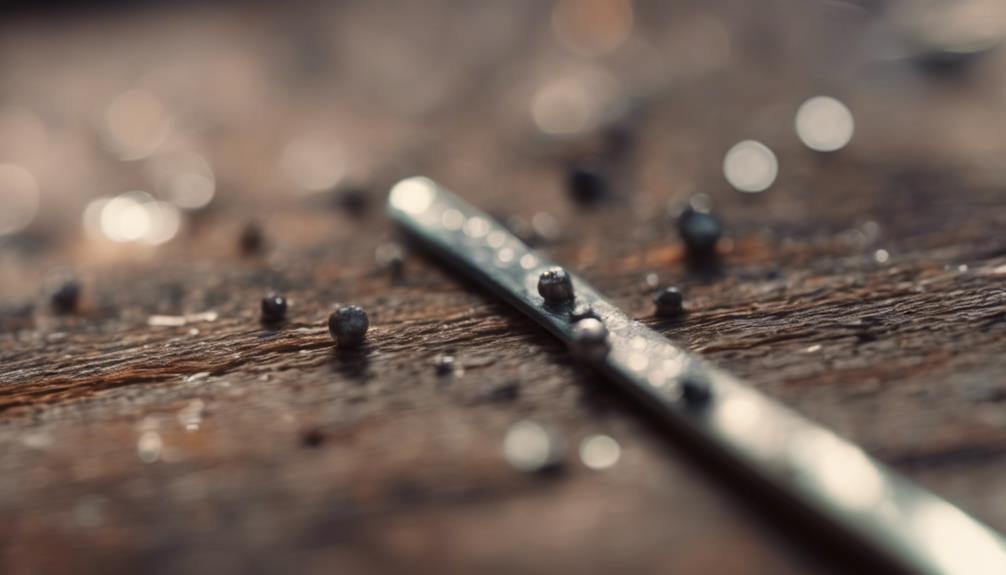
If you notice any of the following signs, your nails may have been damaged by nail drills. First, be on the lookout for nail thinning or weakening. This can manifest as nails that are more prone to breaking or splitting. Secondly, if you observe any changes in the texture of your nails such as roughness or uneven surfaces, it might indicate damage from nail drills. Another sign to watch for is nail brittleness or excessive dryness, as this could be a result of overuse or improper use of drills. Additionally, if you notice any redness, swelling, or pain around your nails after using a nail drill, it could be a sign of damage to the nail bed or surrounding tissues. Lastly, any discoloration of the nails, such as yellowing or dark spots, should not be ignored as it could indicate underlying damage caused by drills. Keep a close eye on these signs to ensure the health and vitality of your nails.
Expert Recommendations for Nail Drill Use
Considering the potential risks associated with nail drills, it is essential to follow expert recommendations for their safe and effective use. To make the most of your nail drill while keeping your nails healthy and beautiful, here are some innovative tips from experts:
- Invest in a High-Quality Nail Drill: Opt for a professional-grade nail drill with adjustable speed settings to ensure precision and control.
- Use the Right Bits: Choose the appropriate drill bits for different nail services to prevent damage and achieve the desired results efficiently.
- Practice Proper Technique: Learn the correct way to hold and maneuver the nail drill to minimize the risk of accidents and enhance your performance.
- Prioritize Safety and Hygiene: Regularly sanitize your nail drill and accessories, wear protective gear like gloves and goggles, and always prioritize safety when using the tool.
Frequently Asked Questions
Can Nail Drills Be Used on Artificial Nails?
Yes, you can use nail drills on artificial nails. They allow for precise shaping and customization. When used correctly and with care, nail drills can enhance the look and feel of your artificial nails.
Are Nail Drills Suitable for All Nail Types?
As you explore the realm of nail care, remember that nail drills offer versatility. However, not all nail types may find them suitable. Embrace innovation, but proceed with caution to ensure your nails remain healthy and strong.
Can Nail Drills Cause Infections?
When using nail drills, be cautious as they can potentially cause infections if not sanitized properly. Prioritize cleanliness to minimize risks. Regularly clean and sterilize your tools to maintain healthy nails.
How Often Should Nail Drill Bits Be Replaced?
To keep your nails healthy, replace nail drill bits every 3-6 months or sooner if they show signs of wear. Maintaining sharp, clean bits ensures efficient and safe nail care, reducing the risk of damage.
Are There Age Restrictions for Using Nail Drills?
Age should not be a barrier to your nail drill dreams. Ensure proper supervision and training for young users. Embrace enthusiasm for innovation, but prioritize safety. Encourage exploration and education for all ages.

